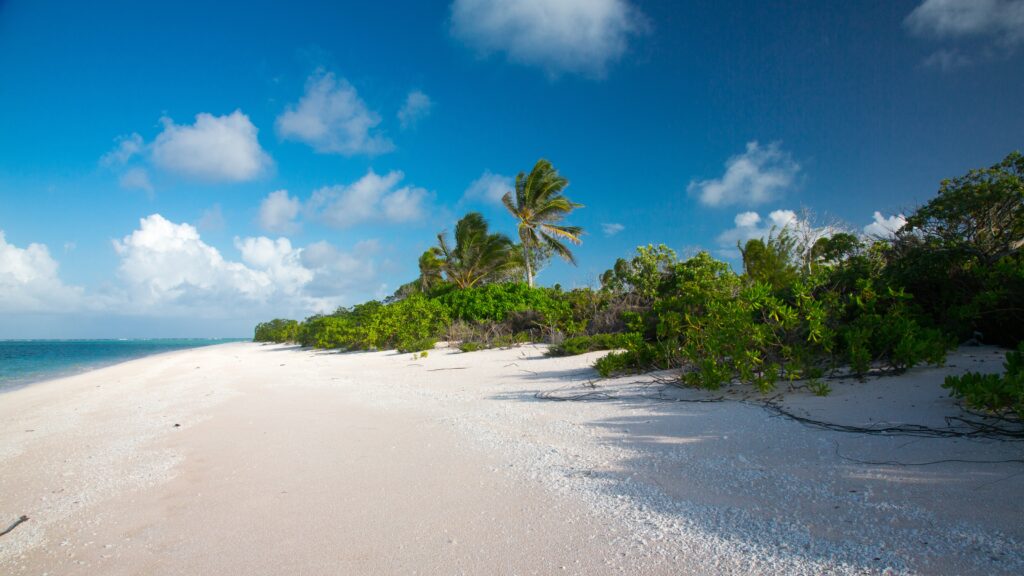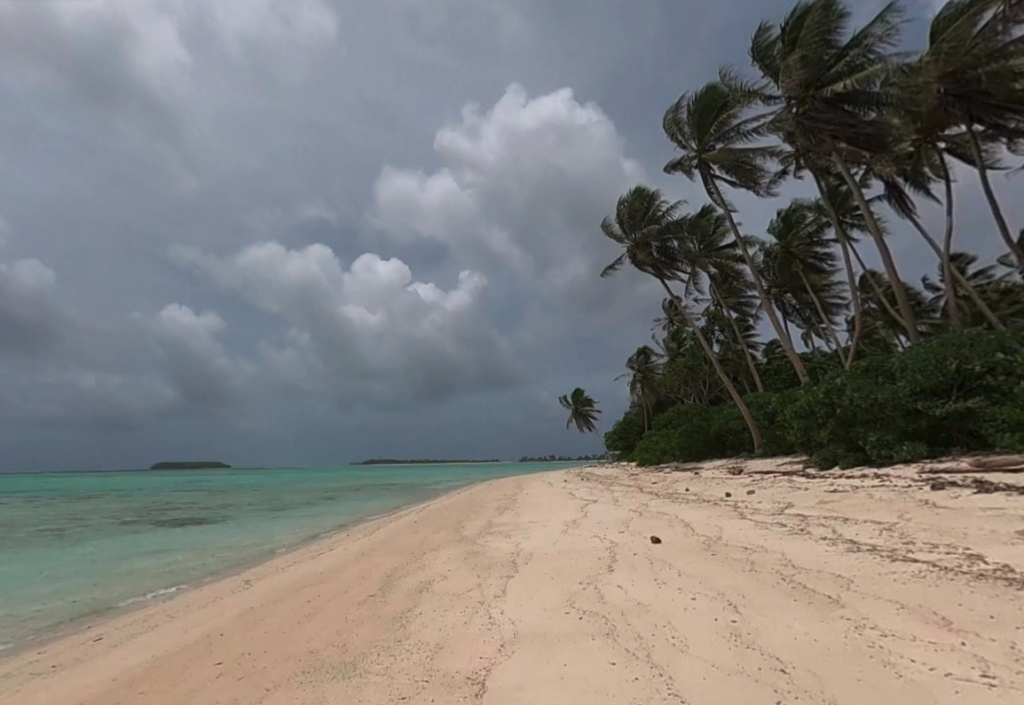Marshall Islands / Republic of the Marshall Islands / Aolepān Aorōkin Ṃajeḷ – Let’s explore here
What’s it like in the Marshall Islands?
The Marshall Islands is a stunningly beautiful island country composed of 29 atolls and five islands. Twenty four of the atolls and islands are inhabited. The remaining atolls are uninhabited due to poor living conditions, lack of rain, or nuclear contamination
The land area of the Marshall Islands is about twice the size of Guernsey, UK. The population is only 42,000 and half live on one atoll – the capital, Majuro. Majuro has a large lagoon, 114 square miles (295 square kilometres) in area.
The highest point in the Marshall Islands is on Likiep Atoll 33ft (10m) above sea level.

A bit about the history of the Marshall Islands
Early History and Settlement
The Marshall Islands, located in the central Pacific Ocean, were first settled by Micronesian peoples over 2,000 years ago. These early inhabitants developed a seafaring culture, relying on navigation and fishing to sustain their communities. The islands were traditionally governed by chiefs, with a strong emphasis on family and clan-based social structures.
European Exploration and Contact
The first European to visit the Marshall Islands was the Spanish explorer Álvaro de Saavedra in 1529. However, the islands remained largely isolated from European powers until the 18th century. In 1788, the British explorer John Marshall arrived in the islands, and they were named after him. Over the next century, European powers, including the Spanish and Germans, made periodic contact with the islands, often for trade purposes.
German and Japanese Control
In the late 19th century, Germany established control over the Marshall Islands, incorporating them into its Pacific colonies. Following World War I, the League of Nations assigned the islands to Japan under a mandate system, which gave Japan administrative control but with the obligation to promote the welfare of the local population. During World War II, the Japanese built military installations on the islands, and the US military launched campaigns to take control of the islands, culminating in the Battle of Kwajalein in 1944. The Marshall Islands became a key battleground in the Pacific theater of the war.
US Trusteeship and Nuclear Testing
After World War II, the Marshall Islands came under US control as part of the Trust Territory of the Pacific Islands, administered by the United States under a United Nations mandate. In the 1940s and 1950s, the US conducted nuclear testing in the region, including at Bikini Atoll, which had devastating environmental and health effects on the local population.
Path to Independence
In the 1970s, the Marshall Islands began moving toward self governance. In 1979, the islands adopted a constitution and became a self governing entity within the Compact of Free Association with the United States. This arrangement allowed the Marshall Islands to have a degree of political independence while maintaining a relationship with the US, which continued to provide economic and military assistance.
In 1986, the Marshall Islands officially became a sovereign nation, with full independence, while still maintaining the Compact of Free Association with the US. This agreement ensures continued American military presence in the region and provides economic support.
Modern Day
Today, the Marshall Islands is a sovereign country which faces significant challenges, including the impacts of climate change, particularly rising sea levels, as much of its territory is very low-lying. The government continues to focus on issues of environmental sustainability, economic development, and maintaining strong relations with the United States. The islands rely heavily on aid, remittances, and industries like fishing and tourism.

Marshall Islands road trip
We haven’t finished our planning for our road trip through the Marshall Islands yet. When we do though, we’ll post it here, and in the blog.
Hopefully our journey will improve our knowledge of this intriguing and beautiful country, and enable us to meet some interesting people. We’ll be updating this page at that time – don’t forget to check back 🙂
What’s it like to drive in the Marshall Islands?
They drive on the right hand side of the road in the Marshall Islands.
We’ve also created a dedicated page to driving abroad, which you might find helpful 🙂
What currency do they use in the Marshall Islands?
In the Marshall Islands they use the US dollar. The use of credit / debit cards is now widespread, although you should take cash in more remote areas. Travellers cheques are accepted in tourist areas. There are ATMs in major tourist areas.
You should make yourself aware of the amount that your bank charges you for using credit and debit cards abroad. Often credit cards are cheaper for purchasing items directly, and for withdrawing cash from ATMs.
What language do they speak in the Marshall Islands?
They speak English and Marshallese in the Marshall Islands.
What time zone is the Marshall Islands in?
Remember, when you’re planning your next trip to take a look at what time zone it’s in.
Do I need a visa to visit the Marshall Islands?
We’ve created a dedicated, more comprehensive page on visas, which you should find helpful. Check it out!
Is wild camping legal in the Marshall Islands?
No, wild camping is illegal in the Marshall Islands.
What plug / socket type do they use in the Marshall Islands?
In the Marshall Islands they use plug / socket types A and B.


Health issues in the Marshall Islands
Is it safe to drink water in the Marshall Islands?
No, it is not safe to drink tap water in the Marshall Islands. Bottled water is readily available throughout the country.
What vaccinations are required for the Marshall Islands?
This NHS website is kept up to date with all relevant information on vaccinations in the Marshall Islands.
Phones in the Marshall Islands
What is the country calling code for the Marshall Islands?
The country calling code for the Marshall Islands is +692
What are the emergency phone numbers in the Marshall Islands?
- The emergency number for police in the Marshall Islands is: 911
- In the Marshall Islands, the emergency number for ambulance is: 911
- The emergency number for fire in the Marshall Islands is: 911
If you’ve got some useful info that you’d like to share, let us know!
And don’t forget to check out all the other pictures!
